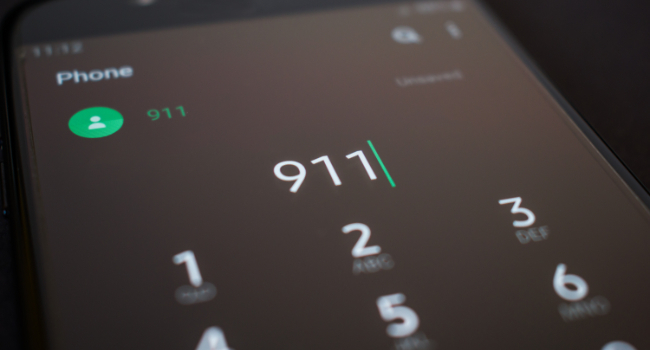
Empowering 911
- By Zachery LaValley
- Feb 24, 2025
In the wake of the tragic murder of UnitedHealth Group CEO Brian Thompson, media coverage flooded the airwaves with images, videos and detailed timelines of the suspect’s movements.
While such post-incident analysis is not new, today’s 911 centers now have access to similar data in real-time. This technological evolution marks a pivotal transformation in emergency response, transitioning from analog calls to a digital ecosystem capable of saving more lives.
Over the last decade, 911 systems have undergone a seismic shift. Frost & Sullivan estimates that by 2027, more than half of emergency calls will originate from IoT devices. The same devices people use every day can also work to keep them safe. This profound shift from traditional legacy ways of operating to modern digital AI-enabled solutions has been driven by public-private partnerships and the growing interconnectedness of everyday technology, which is contributing to a more responsive public safety landscape.
The New Era of Data-driven 911
Today’s 911 systems can receive videos and photos from citizens, access live surveillance footage, and share real-time emergency alerts with connected campuses. These advancements enable public safety and security teams to collaborate and triage emergencies quickly.
Yet, managing and surfacing critical information when every second counts are still a significant hurdle as data pipelines expand.
Consider New Year’s Eve, 911’s busiest night of the year. Call volume surged by 714%, with nearly 150,000 911 calls answered nationwide before sunrise. Amid this surge came high-profile incidents in New Orleans and Las Vegas, where telecommunicators worked through numerous calls and data points to identify and prioritize life-threatening emergencies.
This is where the promise of AI emerges. By harnessing AI, public safety agencies can streamline operations, triage emergencies faster and enable seamless coordination. Interoperable safety platforms powered by AI allow 911 centers to instantly share critical data with field responders and neighboring agencies, setting the stage for a smarter, safer future.
Bridging the Gaps: Data Overload Meets Talent Shortages
Public safety professionals are grappling with two major challenges: overwhelming volumes of data and severe staffing shortages. In fact, 82% of 911 centers report being critically understaffed.
This dual crisis underscores the need for technology that amplifies human capabilities rather than replacing them.
AI-powered tools are already addressing these challenges, providing solutions that unify voice, text, and video communications for faster, more informed decision-making. For example:
Identify emergencies. AI analyzes multiple data streams to surface information in a coherent and actionable view.
Non-emergency call triage. AI manages routine tasks, including IoT-triggered calls and false alarms, allowing experts to focus on life-threatening emergencies.
Real-time transcription and translation. AI eliminates language barriers, ensuring critical information is accessible immediately.
Call summarization. AI summarizes the call, including key insights and other emergency data, to accelerate collaboration in emergency response.
Natural language prompts. Telecommunicators can intuitively query systems to surface actionable insights in moments.
Customized intelligence. By training AI systems on their Standard Operating Procedures, Emergency Communications Centers (ECCs) gain hyper-relevant insights for rapid, confident decision-making.
These advancements empower telecommunicators to concentrate on high-stakes emergencies that require their expertise and human connection, leaving routine tasks to technology.
Collaboration Without Limits
AI does more than analyze data; it builds bridges across agencies and jurisdictions. Interoperable safety platforms enable seamless collaboration between corporate campuses, 911 agencies, and first responders, ensuring that resources and information flow freely during emergencies.
In 2024, the Riverside County Sheriff’s Office demonstrated the power of this technology. When a distressed officer needed help near a neighboring jurisdiction, telecommunicators leveraged interoperable systems to coordinate with the adjacent ECC.
Responders were directed to the officer’s location in time to provide life-saving care — a testament to the transformative potential of AI-driven collaboration.
Building Smarter Cities, One Call at a Time
As AI continues to reshape our world, it must be central to creating smarter, safer cities. By enhancing situational awareness, bridging communication gaps, and empowering telecommunicators and first responders, AI ensures more effective community protection.
AI-driven platforms are helping ECCs turn mountains of data into actionable intelligence, streamlining collaboration and perfecting responses. These tools enhance efficiency and redefine how public safety professionals approach their mission — protecting lives and businesses in an increasingly complex world. Public safety is building the resilient cities of tomorrow — one call at a time.